Concurrent Session 4 | May 7 | 9:30 – 11:00 AM
Session 4.1
Environmental Justice | EJ & NEPA Workshop: Considering Cumulative Effects and EJ in the NEPA Process
9:30 – 11:00 AM
| About the Presentation |
|
Increasingly, decisionmakers are recognizing the importance of looking at projects in the context of prior impacts and developments within the community or region. Direct effects continue to be most important to decisionmakers, in part because they are more certain. Nonetheless, the importance of other environmental stressors requires the need to address cumulative impacts on environmental justice (EJ) populations. The purpose of the workshop is to increase understanding of cumulative effects consideration of environmental justice (EJ) populations in the National Environmental Policy Act (NEPA) review process. The specific focus is the importance of understanding cumulative effects are caused by the aggregate of past, present, and reasonably foreseeable future actions that, for many EJ populations, may last for many years beyond the life of the action that caused the effects. The goal is to provide an understanding of the principles of a cumulative effects analysis within Environmental Justice (EJ) communities.
|
| About the Speaker |
|
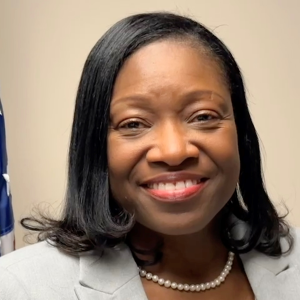 Carolyn L. Nelson, P.E. Carolyn L. Nelson, P.E.
Director for the Environmental Policy & Justice Division
Pipeline and Hazardous Materials Safety Administration’s (PHMSA) Headquarters Office
Carolyn Nelson is Director for the Environmental Policy & Justice Division of Pipeline and Hazardous Materials Safety Administration’s (PHMSA) Headquarters Office. Carolyn oversees and manages activities that provide policy direction and guidance to PHMSA offices in carrying out the agency’s responsibilities under NEPA and other related environmental laws and Executive Orders including EJ guidance.
Carolyn is also currently the Co-Chair of the White House Environmental Justice Interagency Council NEPA Committee and is recognized as a national expert in NEPA and Environmental Justice. As Co-Chair, she is working on implementing national equity and EJ policy with the White House Council on Environmental Quality and the Office of the Secretary of Transportation.
Carolyn is a Licensed Professional Engineer with over 30 years’ experience in Project Development and Environmental Policy. She holds B.S. and M.S. degrees in Civil Engineering from Southern University and A&M College and Michigan State University, respectively.
|
|
 Stan Buzzelle Stan Buzzelle
Attorney-Advisor
US EPA’s Office of Environmental Justice and External Civil Rights
Stan Buzzelle is an Attorney-Advisor in the Policy and Analysis Division at the US EPA’s Office of Environmental Justice and External Civil Rights. Stan helps support the consideration of environmental justice across the Agency’s programs, policies and activities. Areas of focus include environmental justice issues related to regulatory development, commercial transportation, and NEPA. Stan serves as co-chair of the Goods Movement Working Group for the White House Environmental Justice Interagency Council. He also helps support the EPA Ports Initiative’s environmental justice efforts.
|
|
 Denise C. Freeman Denise C. Freeman
Environmental Justice Senior Advisor
U.S. Department of Energy, Office of Nuclear Energy
Denise Freeman is the Environmental Justice (EJ) Senior Advisor for the Dept. of Energy’s (DOE’s) Office of Nuclear Energy (NE). In this role, Ms. Freeman provides leadership in promoting and advancing the effective integration of Equity, Energy and Environmental and Justice principles into the DNA of NE’s mission to advance nuclear science and technology to meet U.S. energy, environmental and economic needs. Ms. Freemanhas worked for 30 years at DOE on various environmental matters, particularly EJ. As co-chair of the NEPA Working Group (WG) of the White House (WH) Environmental Justice Interagency Council (IAC) has worked tirelessly to promote the effective consideration of EJ through the NEPA process. Prior to coming to NE, Ms. Freeman served as Senior Advisor to the Department’s EJ Program Manager. In March 2023, Ms. Freeman received an award of appreciation from the NEJC for her outstanding leadership as co-chair of the NEPA WG of the WH IAC.
|
Session 4.2
NEPA | Recent NEPA Case Law (2023)
9:30 – 11:00 AM
| About the Presentation |
|
The panel is based on a paper that reviews substantive National Environmental Policy Act (NEPA) cases issued by the United States Courts of Appeals in 2023. The implications of the decisions and their relevance to NEPA practitioners will be explained. This session will summarize the more detailed paper prepared for this session. The paper briefly explains, with an emphasis on the substantive NEPA findings, each opinion issued by the U.S. Court of Appeals. The paper identifies statistics regarding the NEPA appellate opinions, such as twelve-year record of NEPA cases, organized by circuit, and by year. The paper also identifies the agencies involved in each case and presents statistics relevant to the agencies; the paper further identifies the prevailing ratio of federal agencies, including by agency and by document type (categorical exclusion, environmental assessment, environmental impact statement). The paper analyzes the trends in the court opinions involving NEPA for 2022, with an emphasis on substantive NEPA practice, and by grouping of the cases. Finally, each court opinion is paraphrased and organized in a manner easy to read for practitioners to find the court's ruling. Appellate opinions are grouped and analyzed by agency. Past trends include challenges to purpose and need, alternatives considered, public comment, scientific impact assessment methodologies, GHG emissions and climate change impact assessment, incomplete or unavailable information, determination of significance, segmentation, duty to supplement, connected actions, federal actions, cumulative impact assessment, mitigation, monitoring, and adaptive management. Suggestions for improving the implementation of the NEPA process and meeting current challenges are offered, looking ahead to the future with a renewed emphasis on one of the world's oldest and most forward-looking environmental laws.
Objectives:
- Gain knowledge of NEPA Case Law Trends at the Federal Appellate Level from 2023
- Understand common pitfalls and best practices as represented in the 2023 cases
- Improve NEPA practice through an understanding of accepted impact assessment practices, as interpreted by the Federal Appellate Courts
|
| About the Moderator |
|

Fred Wagner
Partner
Venable LLP
Fred Wager focuses on environmental and natural resource issues, associated with major infrastructure, mining, and energy project development. Fred was appointed chief counsel of the U.S. Federal Highway Administration (FHWA) during the Obama administration. Fred began his career as a trial attorney in the Environment Division of the U.S. Department of Justice. He also served as a special assistant U.S. attorney in the Misdemeanor Trial Section of the U.S. Attorney's Office for the District of Columbia. Prior to joining Venable, he spent more than 20 years in private practice at a national law firm focusing on environmental and natural resources issues.
|
| About the Speaker(s) |
|
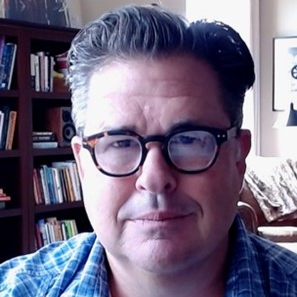 Michael D. Smith, PhD Michael D. Smith, PhD
National Practice Leader, Environmental Process and Policy
WSP
Michael is a nationally-recognized leader in environmental policy and National Environmental Policy Act (NEPA) compliance, with more than 29 years of experience in environmental impact assessment, project and program management, policy development, land use planning, business development, group leader, and training/education with the federal government, private sector, academia, and non-governmental organizations. His technical areas of expertise include assisting clients with successfully navigating complex permitting situations; cumulative impact analysis; greenhouse gas emissions and climate change analysis; socioeconomics and environmental justice analysis; and designing strategies for streamlining NEPA and CEQA and related permitting processes and reviews.
|
|
 Melanie Hernandez, Esq., CEP Melanie Hernandez, Esq., CEP
Vice President, Co-Founder, Senior NEPA Project Manager
Scout
Melanie Hernandez is a licensed attorney and the co-founder and Vice President of Scout, an environmental and engineering company headquartered in San Diego, CA. With over 20 years in NEPA and environmental law, she leads as a senior NEPA project manager, serving clients like the Navy, Marine Corps, Air Force, Army, and the Coast Guard. Her expertise includes managing multidisciplinary NEPA teams for projects involving new military systems, construction, and public land access. Her responsibilities also extend to developing training on environmental laws including the Clean Air Act, Clean Water Act, National Historic Preservation Act, Executive Order 12114, and more. Prior to Scout, she led some of the most complex Environmental Impact Statements for the Marine Corps in the Pacific and Japan, where she lived for five years. Melanie holds a B.S. from Andrews University and a J.D. from George Washington University Law School, and is admitted to the bar in Maryland and D.C.
|
|
 P.E. "Pam" Hudson, Esq. P.E. "Pam" Hudson, Esq.
NAVFAC SW
Department of the Navy Office of General Counsel
An NAEP member since 2013, P.E. "Pam" Hudson serves as the Senior Associate Counsel for Naval Facilities Engineering Systems Command Southwest. Prior to joining NAVFAC, Ms. Hidson served as Counsel for Cibil Engineer Corps Officers School, where a majority of her portfolio notably included environmental impact assessment legal sufficiency reviews and the Nacy's environmental law training program. Since 2013, Ms. Hudson has authored fifteen federal agency, academic and peer-reviewed articled, which have been cited in the Federal Register, on agency websites and journals, academic journals, and in news articles. She has twenty years of environmental impact assessment experience; from 2013-2015, she served on NAEP's committee for the CEQ's Pilot Project on Best Practice Principles for Environmental Assessments. Prior to joining the Office of General Counsel, she practiced at Kilpatrick Stockton, LLP, in Atlanta, Georgia, and Roetzel & Andress in Naples, Florida. She interned as a federal clerk for the Northern District of Florida for the Honorable Robert Hinkle. Ms. Hudson is an alumna of Florida State University School of Law, where she was the Beverly Stout McLear Environmental and Land Use Scholar. Ms. Hudson retired from the Navy as Commander (Oceanography).
*Ms. Hudson's views are hers alone, and do not reflect the views of the Department of Defense or the Navy
|
|
 Bilal Harris Bilal Harris
Attorney-Advisor
Federal Highway Administration’s (FHWA)
Bilal Harris is an attorney-advisor with the Federal Highway Administration’s (FHWA) South Field Legal Services Division in Atlanta, Georgia. He works with FHWA Division Offices in twelve southern states on a variety of environmentally related legal matters arising under the National Environmental Policy Act of 1969 (NEPA), with a focus on reviewing environmental documents for transportation projects and litigation.
Prior to joining the FHWA, Mr. Harris worked in private practice where he worked on complex legal issues under the Comprehensive Environmental Response, Compensation, and Liability Act (CERCLA), Clean Air Act, Clean Water Act, PFAS liability, standing, the Georgia Hazardous Site Response Act and the Endangered Species Act. Mr. Harris also worked as an attorney with the United States Environmental Protection Agency’s Region 4 Office of Regional Counsel as Associate Regional Counsel providing legal counsel on complex legal issues under CERCLA, and support to Region 4’s Superfund Division on matters of federal, state and local laws.
Mr. Harris obtained a B.A. in Anthropology from the University of Georgia and a J.D. from the Howard University School of Law.
|
Back to Top
Session 4.3 A
Biological Resources | Insect Responses to Pollinator Habitat at Solar Energy Facilities
9:30 – 10:00 AM
| About the Presentation |
|
The expansion of utility-scale solar development across the U.S. has increased the pressure on land resources for energy generation and other land uses (e.g., agriculture). To address this growing issue, greater emphasis has been placed on development strategies that maximize the benefits of energy generation and multiple ecosystem services, such as combining solar energy development with biodiversity conservation. Compared to other types of site management, the restoration of native grassland habitat at solar energy facilities (solar-pollinator habitat) has the potential to improve habitat quality for pollinating insects and other native wildlife, while also providing other ecosystem service benefits. As more solar developments are being managed for solar-pollinator habitat, there is a need for monitoring projects to inform questions around ecological performance, scalability, and management considerations. In this presentation, we share our collaborative broad-scale ecological monitoring strategy for solar energy sites in the Midwest that have been planted with pollinator-friendly native vegetation. Several of these solar facilities in Minnesota have been systematically monitored over the past 5 years to measure habitat and insect pollinator responses over time, while research is just beginning at the other sites. The primary ecological performance measures we are investigating include:
- Vegetation establishment and habitat composition;
- On-site insect pollinator abundance and diversity; and
- Off-site pollinator visitation to nearby agricultural areas.
Findings from monitoring efforts show temporal increases in habitat diversity and onsite pollinator abundance and diversity. There are also some temporal trends in pollinator visitation to nearby agricultural fields. In addition to these findings, we will also discuss designs for research at new large-scale facilities (>10 MW) to monitor vegetation establishment and pollinator effects considering the scale and configuration of the plantings. |
| About the Speaker |
|
 Laura Fox Laura Fox
Natural Resource Specialist
Argonne National Laboratory
Laura Fox is a Natural Resource Specialist with Argonne National Laboratory. She has been working on insect community responses to habitat establishment at utility scale solar facilities in the Midwest as part of the PHASE and INSPIRE projects for several years.
|
Session 4.3 B
Biological Resources | Passive Acoustic Monitoring Technologies to Understand Avian and Bat Occurrence at Solar Energy Facilities - CANCELED
10:00 – 10:30 AM
| About the Presentation |
|
As more "habitat-friendly" solar facilities are being developed and managed, there is a need for monitoring projects to inform questions around ecological performance, scalability, and vegetation management. With the current pace of solar development, it is particularly important for these monitoring projects to utilize best available tools and technologies to provide timely results to inform science-based decisions on siting, permitting, and best management practices. In this presentation, we share interim results of ongoing DOE-funded studies to understand whether the construction of solar energy facilities and the vegetation managed at those facilities influence the occurrence and activity of bird and bat communities. We deployed several passive acoustic recorders (Wildlife Acoustics Song Meter Mini Bat recorders) to detect the presence of vocalizing bird and bat species within the solar facilities and in adjacent reference areas in nearby agricultural fields. Our goal was to determine whether habitat plantings at solar facility test sites increase the diversity and abundance of wildlife over time as compared to reference sites without pollinator plantings. This presentation will discuss the analysis methods that we utilized to analyze the large volume (>2 TB) of acoustic and ultrasonic data collected from these recorder units. Advancements in automatic species classifiers that utilize machine learning and deep learning can expedite the processing of these recordings and quickly generate species detections within the acoustic files. We used BirdNET, developed by the Cornell Lab of Ornithology, to automatically generate bird species detections from acoustic recordings; we used Kaleidoscope Pro software by Wildlife Acoustics to automatically generate bat species detections from ultrasonic recordings. As emerging technologies, there is a need to validate these automatic classifiers. This presentation will discuss our validation methods and how we used the validation results to guide our interpretation of the output from the automatic classifiers. Integrating passive monitoring methods with advanced automatic species detection technologies can provide timely and scalable information on biodiversity at solar energy sites, which will facilitate the rapid science-based decision-making needed to commensurately support the nation's fast-evolving renewable energy transition.
|
| About the Speaker |
|
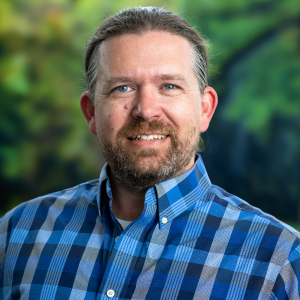 Leroy (Lee) Walston Leroy (Lee) Walston
Ecologist
Argonne National Laboratory
Leroy (Lee) is an ecologist at Argonne National Laboratory with an MS in Biology. His work focuses on evaluating the environmental impacts of energy decisions and identifying energy-ecological synergies. He is interested in research and applications in the following areas: terrestrial/landscape ecology, sustainable energy development, geospatial modeling; and ecological impact evaluations of energy development. His recent work has focused on wildlife monitoring capabilities to understand the ecosystem function of large-scale solar energy developments.
|
Session 4.3 C
Biological Resources | Detection of Federally Listed Eurycea Salamanders Using Environmental DNA
10:30 – 11:00 AM
| About the Presentation |
|
Eurycea salamanders are a diverse group of amphibians that inhabit karst springs and subterranean voids in central Texas. Many are federally listed as endangered or threatened due to habitat loss, water quality degradation, and drought. Environmental DNA (eDNA) is a non-invasive method that can detect the presence of aquatic organisms by analyzing DNA shed by a target species in various environmental media, including groundwater. We used eDNA to determine if the federally listed Jollyville Plateau salamander (Eurycea tonkawae; hereafter JPS) is present within the project area of a proposed roadway project in Williamson County, Texas. We collected water samples for eDNA analysis from four suspected karst springs within the project area and one control karst spring site occupied by the target species. Positive detections of JPS at the control site confirmed the validity of the methods. The target species was not detected at any of the spring sites within the project area, suggesting that these sites are not suitable or not currently occupied by JPS. Our results indicate that eDNA is a reliable tool for monitoring the distribution and status of this endangered species in central Texas and that the potential impacts of a project on this species may be negligible. The results of this study can likely be applied to other Eurycea species in central Texas.
|
| About the Speaker |
|
 Brian Cowan Brian Cowan
Professional Geoscientist in the State of TexasProgram Manager/Senior Geoscientist
Stantec
Mr. Cowan is a Hydrogeologist, Texas Registered Professional Geoscientist, and holds a USFWS scientific research permit for endangered karst invertebrates and aquatic invertebrates and crustaceans in central Texas. He has conducted habitat assessments, presence/absence surveys, and aquifer biota studies for karst species in the central Texas region. He has authored numerous technical documents and conducted consultations with USFWS. He has served as a karst geology, hydrogeology, and endangered species expert for Environmental Impact Statements, Environmental Assessments, and Categorical Exclusions for multiple large-scale projects in central Texas.
|
Session 4.4 A
Transportation | Successful Section 4(f) Mitigation Strategies for SD44 Platte-Winner Bridge
9:30 – 10:00 AM
| About the Presentation |
|
The South Dakota Department of Transportation (SDDOT) and Federal Highway Administration (FHWA) are proposing to replace the existing South Dakota Highway 44 Bridge (SD44) over the Missouri River and a reservoir known as Lake Francis Case. The reservoir is operated by the U.S. Army Corps of Engineers (USACE) and the U.S. Coast Guard (USCG) has jurisdiction over the navigable channel within the river. Built in 1966, the current historic bridge crosses the Missouri River with a total length of approximately 5,656 feet, (over one mile long) making it the longest bridge in the state. This bridge replacement project includes impacts and mitigation to Section 4(f) properties, Section 6(f) properties, a complex Section 106 process, tribal coordination, and two cooperating federal agencies in addition to the lead federal agency. This session will focus on Section 4(f) mitigation strategies that were used to successfully navigate through the complex process in addition to other unique project aspects.
This session will share the following techniques and strategies with other transportation NEPA practitioners that could be helpful for other projects:
- Section 4(f) mitigation strategies that were successfully used in obtaining FHWA's concurrence through the NEPA process
- Agency and tribal coordination to successfully accomplish a Memorandum of Agreement through the Section 106 process
- Cooperating agency coordination between FHWA, USACE, and USCG through NEPA and in preparation of Section 408 permitting needed prior to construction
|
| About the Speakers |
|
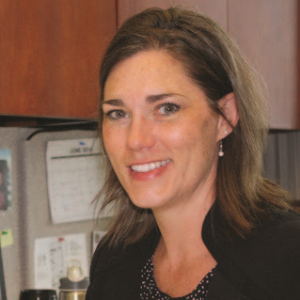 Stacy Woodson Stacy Woodson
Technical Director | Senior Project Manager | Group Leader
HR Green, Inc.
Stacy E. Woodson, P.E. is a licensed civil engineer and works for HR Green, Inc. located in Cedar Rapids, Iowa. In the Technical Director role, she leads a team of environmental professionals who together have over 80 years of experience in assisting clients through the environmental and planning processes for transportation projects. She is a Senior Project Manager responsible for managing client communications, and client expectations, working with team members, and keeping projects on schedule and on budget. She is also the Cedar Rapids Transportation Group Leader managing a group of transportation professionals designing Iowa’s Roadways. Stacy has over 20 years of experience helping clients achieve environmental compliance with federal laws such as; the Clean Water Act, Endangered Species Act, Historic Preservation Act, and the National Environmental Policy Act. Stacy’s experience includes environmental resource impact analysis, report writing, public involvement, and agency coordination with federal, state, and local agencies.
Stacy received a Bachelor of Science degree in Civil Engineering from Iowa State University in 1998. She is an active member in the American Society of Civil Engineers, the National Association of Environmental Professionals, and the Society of Women Engineers. When Stacy is not working she enjoys spending time with her husband and son. She enjoys reading, volunteering, canoeing, hiking, and traveling.
|
|
 Andrea Bierle Andrea Bierle
Environmental Engineer
South Dakota DOT
Andrea Bierle is the Environmental Engineer for the South Dakota Department of Transportation at the Central Office in Pierre. In the Environmental Engineer role, she ensures that all the federally funded South Dakota DOT projects are in compliance with the National Environmental Policy Act. Additionally, she assists the Environmental Manager with certification of Categorical Exclusions, Environmental Assessments, and Findings of No Significant Impacts. Andrea received a Bachelor of Science degree in Civil Engineering from South Dakota State University in 2019. While there, she was an active member in the American Society of Civil Engineers. Recently, she has become a member of the National Association of Environmental Professionals, with hopes of finding more opportunities to share her passion and knowledge of NEPA.
When Andrea is not working, she enjoys ranching with her husband on his family’s ranch in Midland, SD. She enjoys crocheting, cuddling her cats, and feeding treats to any cow who wants one.
|
Session 4.4 B
Transportation | Environmental Commitments: State of the Practice
10:00 – 10:30 AM
| About the Presentation |
|
State DOTs regularly make environmental commitments during the NEPA/project development process to avoid, minimize, and/or mitigate environmental impacts resulting from a proposed project to the natural, cultural, and social environmental resources located in the project area. State DOTs use various processes to define, implement, monitor, and verify environmental commitments throughout all phases of project development and delivery including planning, design, construction, operations, and maintenance. This presentation will provide insight into State DOTs policies and procedures for environmental commitment identification and tracking from a national perspective. This national-perspective presentation will be complemented by a presentation by Ken Graeve, Minnesota DOT's (MNDOT) Erosion and Stormwater Management Unit Supervisor and Carol Strojny, MNDOT Environmental Program Specialist, highlighting processes and procedures for tracking and implementing environmental commitments and specific projects in Minnesota.
Objective:
- Provide insight for NEPA practitioners into the range of policies and procedures used by State DOTs to ensure environmental commitments developed as part of the NEPA/project development process are tracked and ultimately implemented on construction of the project.
|
| About the Speakers |
|
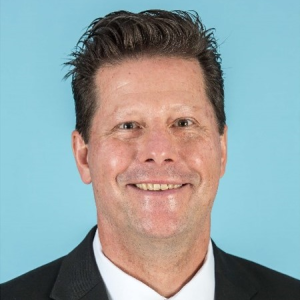 David Grachen David Grachen
Senior Environmental Manager
Edwards Pitman Environmental, a Braun Intertec company
David Grachen is a Senior Environmental Manager at Edwards-Pitman Environmental Inc. in Atlanta, Georgia with over 35 years of professional experience. His environmental expertise spans the broad range of human and natural environmental laws, regulations, and policies governing the development of transportation projects requiring compliance with federal, state, and local environmental laws. Prior to his FHWA retirement in May 2021, he was the Agency's national subject matter expert on the NEPA Assignment Program and Section 4(f) compliance. During his FHWA career, he developed and delivered environmental training courses in every one of the 50 States. As a Senior Environmental Manager at Edwards-Pitman Environmental Inc., I continue to use my environmental expertise to resolve complex environmental compliance issues expedite transportation project delivery, and pursue business development opportunities in other sectors.
|
|
 Ken Graeve Ken Graeve
Erosion and Stormwater Management Unit Supervisor
Office of Environmental Stewardship Minnesota Department of Transportation
Ken Graeve supervises the Erosion and Stormwater Management Unit at the Minnesota Department of Transportation (MnDOT) in Saint Paul, MN. He and his team provide statewide program direction and technical support regarding construction stormwater management, roadside vegetation establishment, and tracking environmental commitments. He has been at MnDOT for 16 years, which includes previous work in roadside vegetation management, roadside prescribed fire, invasive species control, and threatened/endangered species protection. Ken has a bachelor's degree in biology, with educational and professional background in Ecological Restoration and Botany.
|
|
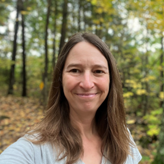 Carol Strojny Carol Strojny
Environmental Program Specialist
Office of Environmental Stewardship Minnesota Department of Transportation
Carol Strojny coordinates the Statewide environmental commitment tracking program for the Minnesota Department of Transportation. In this position, she collaborates with multiple functional areas including environmental review, design, construction, and maintenance. She also facilitates environmental review of DOT building facility projects. Carol holds an undergraduate degree from UW-Stevens Point and a master's degree in wildlife Ecology from the University of Maine.
|
Session 4.4 C
Transportation | Environmental Commitments: Tracking & Arizona DOT's EPIC (Environmental Permits Issues and Commitments) Plan Sheet - CANCELED
10:30 – 11:00 AM
| About the Presentation |
|
Through the traditional project development process, the environmental review process requires consideration of impacts and commitments to avoid, mitigate, or minimize environmental impacts. Through the history of a project, environmental commitments can be identified as part of a design process, or as part of a construction or maintenance requirement. As part of the traditional environmental evaluation process, environmental commitments are identified, documented, and carried through into the implementation of final design, construction, and maintenance phase. One area of common continued consideration for NEPA practitioners and technical specialists is how to effectively implement environmental commitments into the next phases of projects, and how best to communicate the necessary environmental requirements between different groups. Ultimately, dedicated process and communication will lead to process improvements and open communications. The efforts of environmental commitments tracking takes routine collaboration amongst project teams, and resources dedicated to the monitoring and completion of requirements. This session will explore Arizona Department of Transportation (ADOT) continued efforts to continuously improve environmental commitment tracking efforts in traditional design-bid-build projects as well as alternative delivery projects. ADOT has implemented various measures to ensure environmental commitments compliance, such as the Environmental Permits Issues and Commitments (EPIC) design plan sheet, which is a detailed plan sheet that documents and outlines the environmental compliance requirements for contractors during construction. In addition to exploring the efforts that went into creating the EPIC sheet, the session will also briefly cover additional environmental compliance tracking efforts such as the creation of an Environmental Commitments Coordinator dedicated position, Environmental Management Plans, Environmental Commitments Tracking system, and other communication efforts during the construction phase.
The session will discuss process evaluations that were undertaken, different disciplinary groups that collaborated on these processes, and continued improvements even as these processes are in place.
|
| About the Speaker |
|
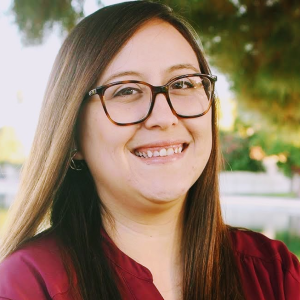 Katie Rodriguez Katie Rodriguez
Environmental Program Manager
Arizona Department of Transportation
Katie Rodriguez is an Environmental Program Manager for the Arizona Department of Transportation (ADOT) in Phoenix, Arizona. In her Environmental Program Manager Role, she works with Environmental Project Managers and various technical environmental experts to ensure that the State's construction projects are in compliance with the National Environmental Policy Act and other federal regulations. Additionally, she also assists with reviews of Environmental Impact Statements, Environmental Assessments, Categorical Exclusions, and Environmental Justice analysis. Katie received her Bachelor of Science degree in Environmental Science from Northern Arizona University.
|
Back to Schedule
|